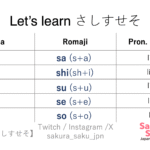🌸Welcome to Sakura Saku Japanese Lesson!🌸
I’m Asami. This blog is for English speakers who want to learn Japanese easily.
You can find simple lessons, tips, and summaries of my Twitch streams here.
Whether you’re a beginner or just practicing, this blog will help you enjoy learning Japanese.
The main theme of this lesson is learning how to read and write “さしすせそ.
This is Part 1 of this lesson. If you haven’t read Part 2 yet, check it out here.
📗Let’s review あいうえお
In the previous lesson, we learned the basic vowels “a, i, u, e, o” and the first consonant row “ka, ki, ku, ke, ko”, along with some key features of hiragana.
(For more details, check the Lesson 3 blog!)
The five vowels あいうえお are the foundation of Japanese pronunciation, so it’s important to know them well before moving on to next group.
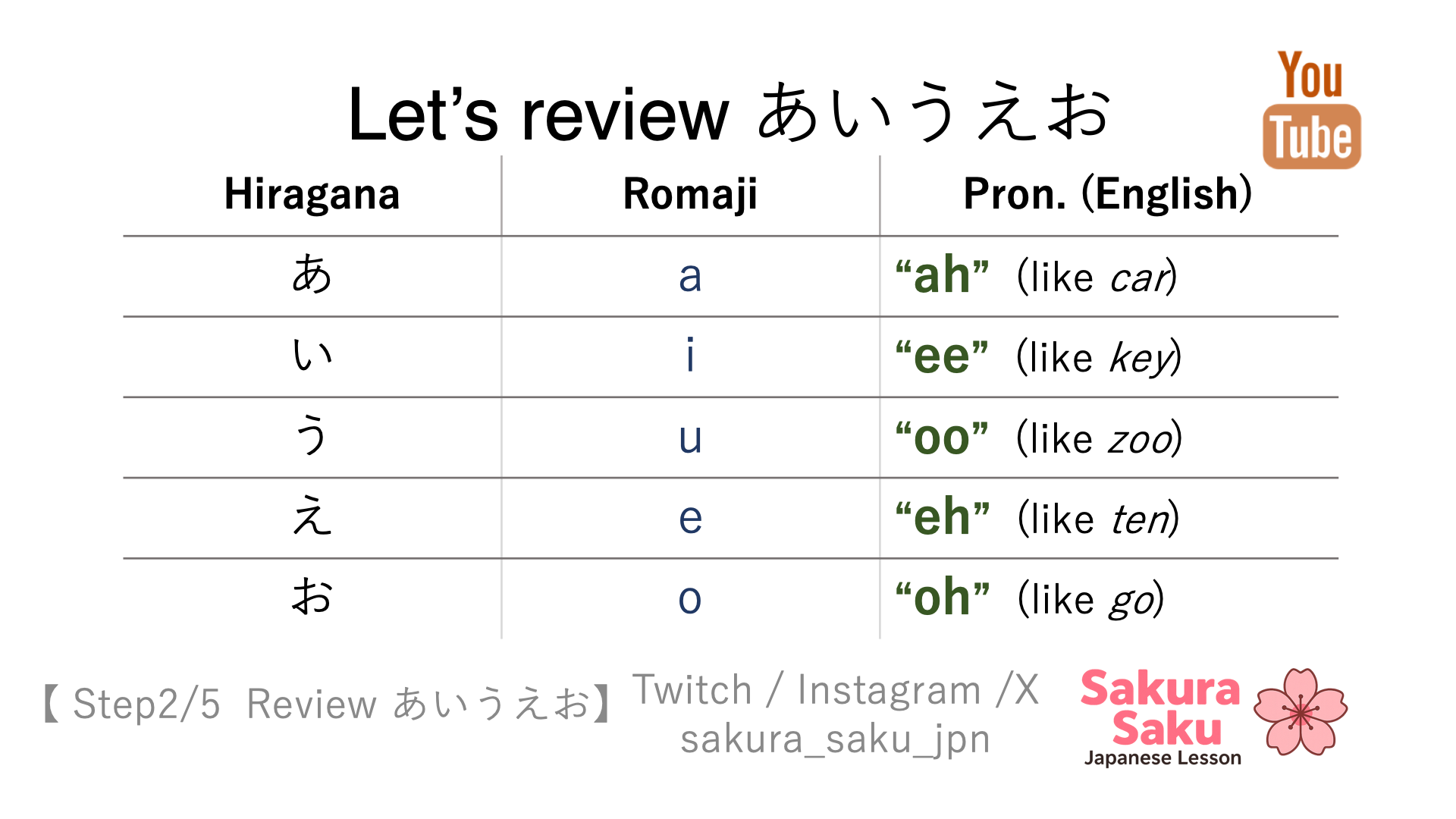
Take a look at the chart above — each letter uses the vowels you already know.
Here’s how you can read them:
- あ sounds like car
- い sounds like key
- う sounds like zoo
- え sounds like ten
- お sounds like go
Now you can say あいうえお! Pretty easy, right?
💡 Tip: Mastering these vowels first will make learning other Hiragana much easier.
📕Quick review of かきくけこ
Before we move on, let’s quickly review かきくけこ. These characters are simply the vowels あいうえお with the k consonant added, so they’re easy to remember.
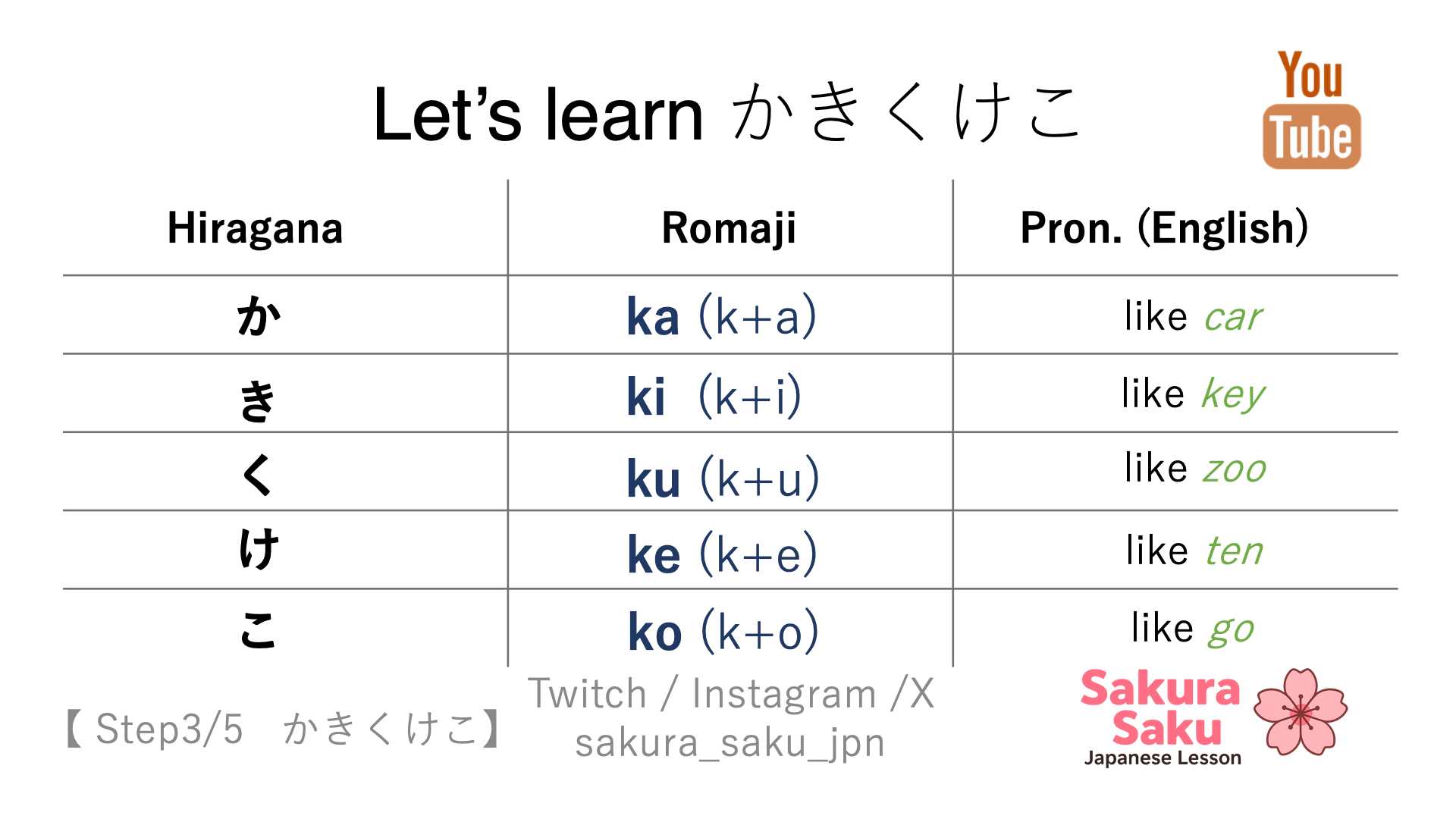
か — ka
き — ki
く — ku
け — ke
こ — ko
Let’s say them together: ka, ki, ku, ke, ko. Perfect!
Now we’re ready to start さしすせそ. Let’s learn how to read and write them step by step.
🗣️How to Read さしすせそ
Now, let’s learn the next group of hiragana: さしすせそ.
It’s simple — you just add ‘s’ to the vowels あ, い, う, え, お.
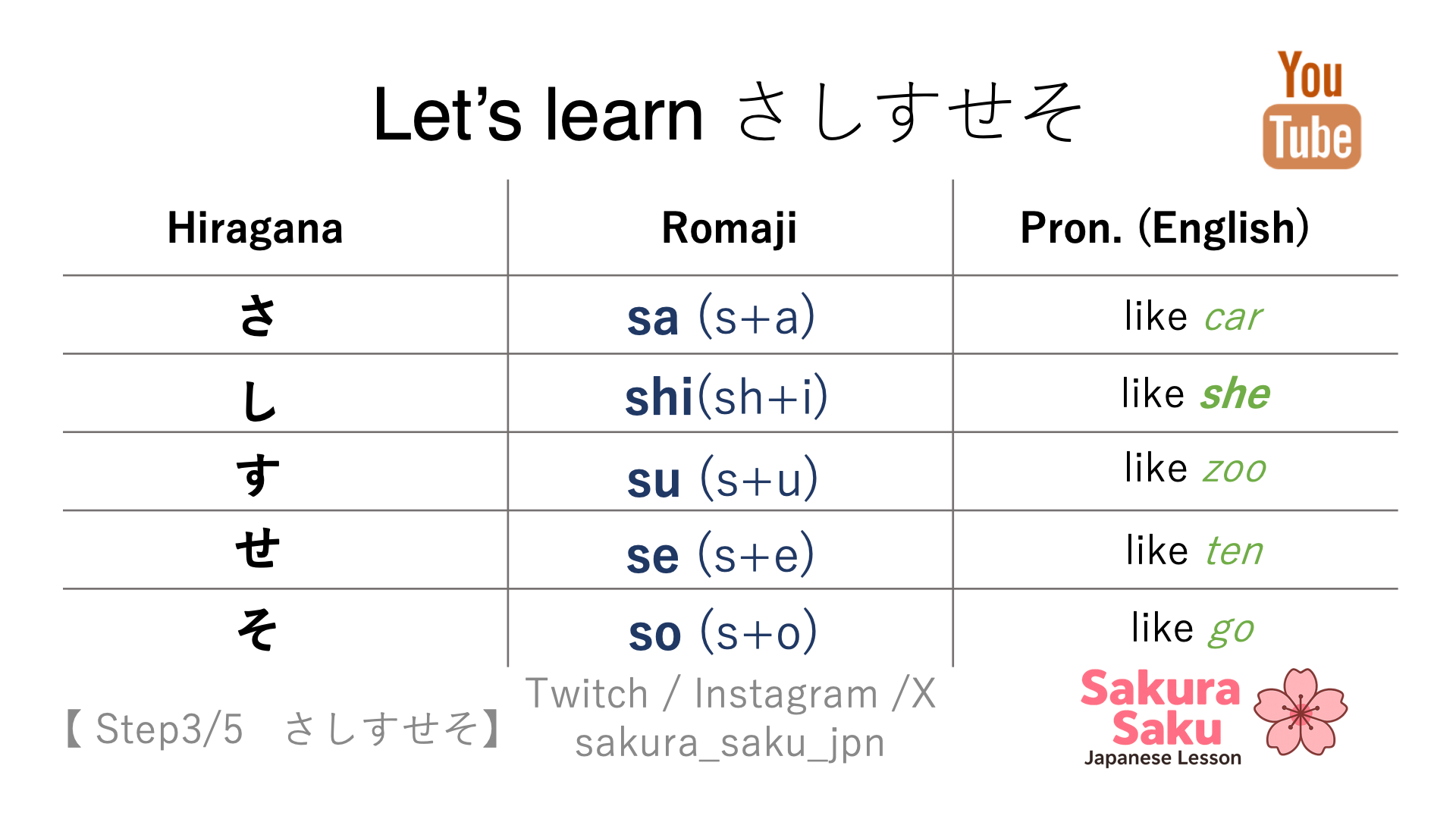
さ=sa
Just ‘s + a’. You can say it like the a in car.
し = shi
This one is special. You might think it is ‘s + i’ and read it like si, but in Japanese it is pronounced she.
It sounds like the beginning of the English word she.
Tip
If you say si, a lot of air comes out and it sounds sharp. If you say she, less air comes out and it is softer.
す = su
Like zoo.
せ = se
Like ten.
そ = so
Like go.
Now let’s say them all together slowly: さ, し, す, せ, そ. Great job!
Next, we’ll practice writing these letters and learn some words using さしすせそ.
📚Learning Words with さしすせそ
Now that we’ve practiced さしすせそ, let’s learn some words using these hiragana. You’ll see the hiragana with small picture hints — try to guess how to read them and what they mean!
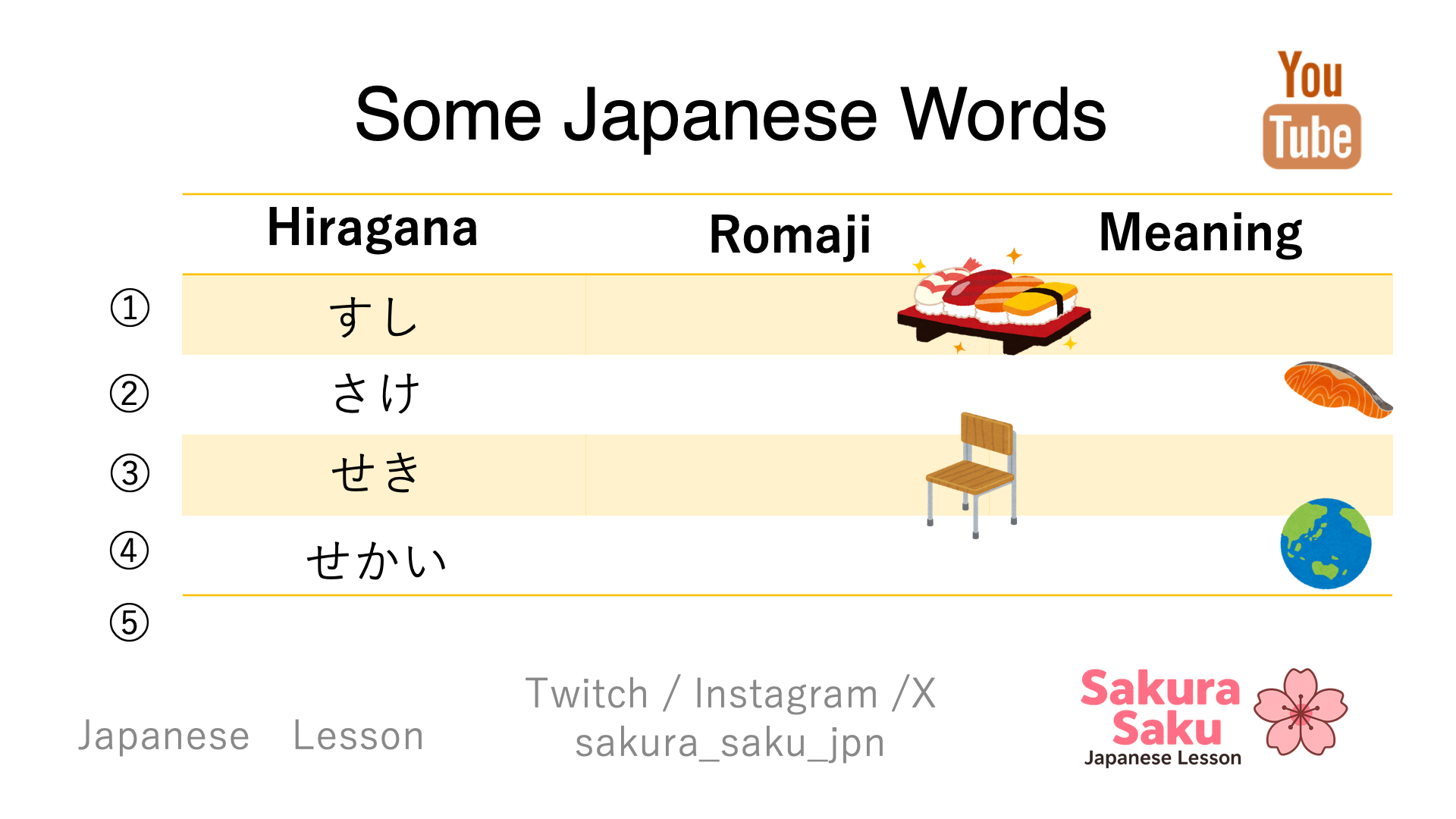
Let’s check the answer.
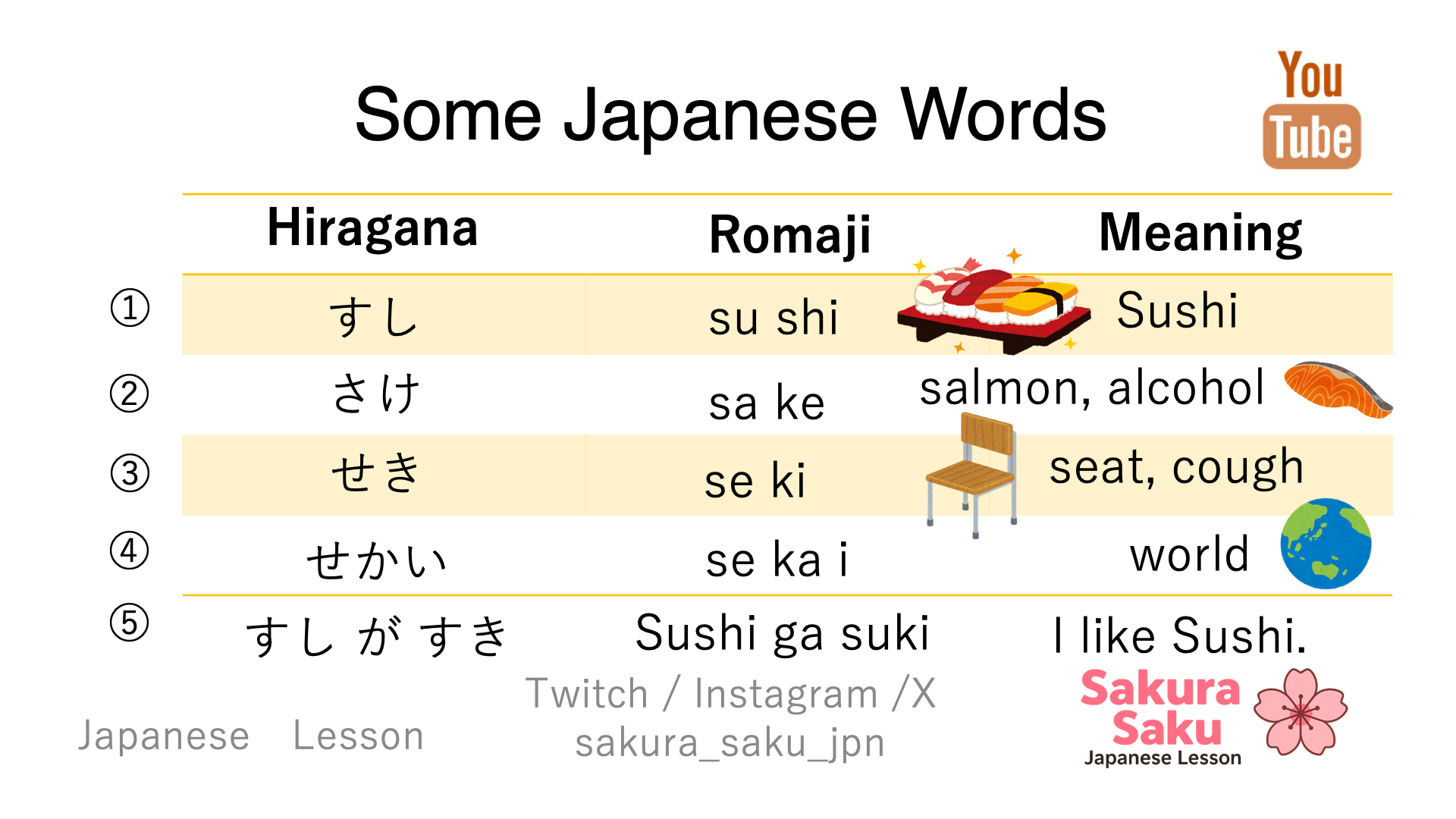
Did you get some of them right?
Both “sake” and “seki” can have two different meanings depending on the pronunciation!
⑤Bonus Phrase
Talk About Things You Like in Japanese
If you know this phrase, you can easily talk about things you like!
Example:
- すし が すき — sushi ga suki — “I like sushi” 🍣
Tip:
You can replace Sushi with any word you like:
- わたしは まんが が すき — Watashi wa manga ga suki — “I like manga”
- わたしは あいすくりーむ が すき — Watashi wa aisu kurīmu ga suki — “I like ice cream”
💡 Point:
Replace すし with your favorite thing to make the phrase your own.
Great job today! Keep practicing, and soon you’ll be able to read and write even more Japanese words.
If you haven’t read Part 2 yet, check it out here.
📱Follow Me on SNS!
To stay updated on my lessons, follow me on:
Instagram&X – where I post useful Japanese phrases, culture tips, and short lesson previews.
TikTok↓ @sakura_saku_jpn

Instagram↓ @sakura_saku_jpn

X↓ @sakura_saku_jpn

I also upload full lesson videos to YouTube, so you can watch or review anytime.
And don’t worry — chat names won’t appear in the videos. Your privacy is important.
youtube.com/@sakura_saku.lesson

I’m truly grateful for your time and support.
Your interest in Japanese means so much to me.
Let’s keep learning together!
